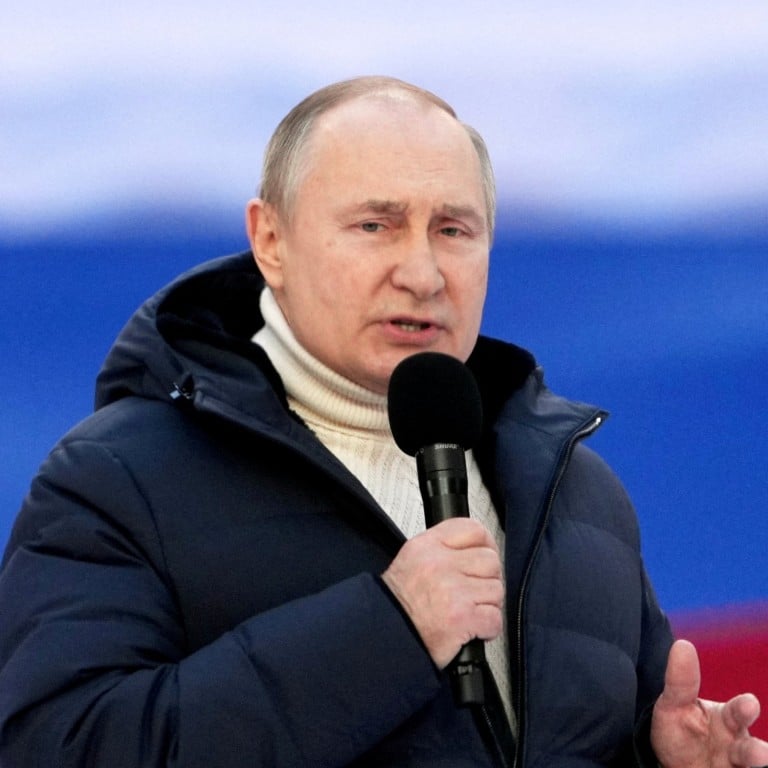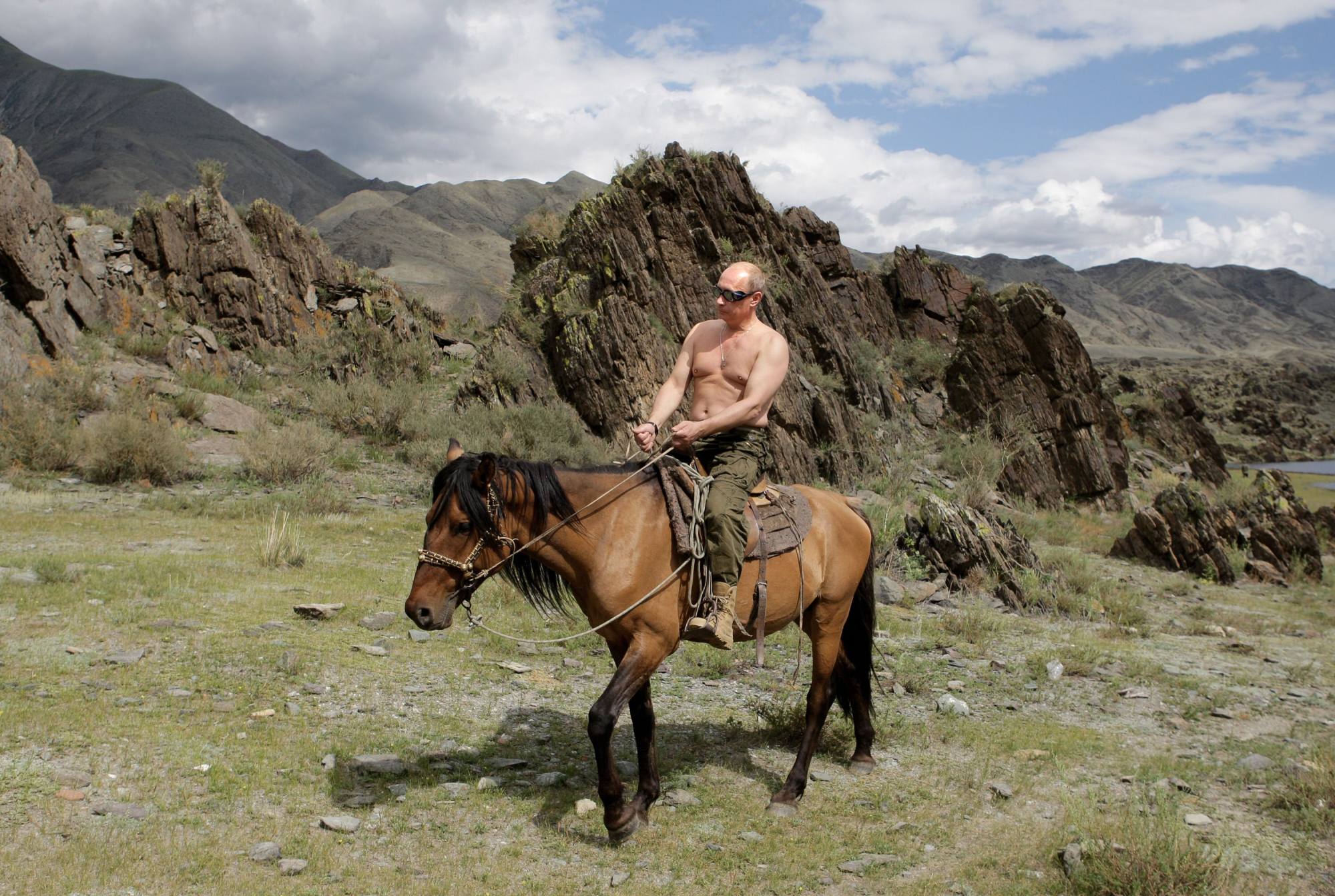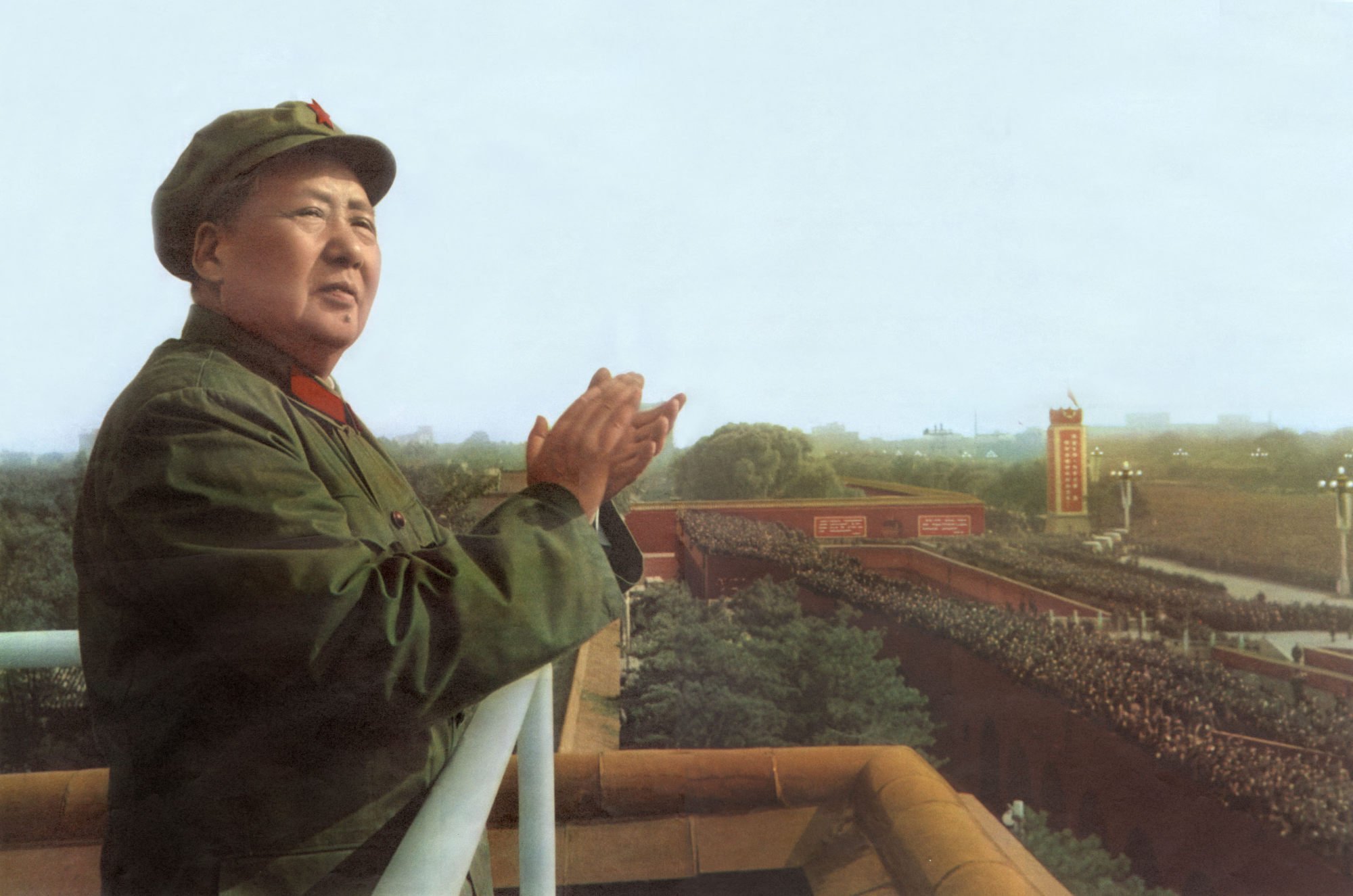
How Putin’s US$14,000 coat, Zelensky’s green T-shirts and Macron’s air force hoodie send a message to the world
- Vladimir Putin’s Loro Piana jacket and Kiton jumper, which he wore to a recent rally, were designed by their sheer cost to cement his strongman status at home
- In stark contrast, Volodymyr Zelensky’s combat gear, worn since the invasion began, evokes the feeling that he is sharing in his nation’s pain as an equal
When Vladimir Putin wore a puffer jacket costing 25 times the average monthly salary in Russia to a pro-war rally in the country on March 18, his choice was about a lot more than just warmth.
He paired the US$14,000 Loro Piana coat with a US$3,000 roll-neck jumper by another Italian brand, Kiton, in a move that would mean political suicide in many countries – but which was designed by its sheer cost to cement his strongman status at home.
It also includes this telling quote from Gucci creative director Alessandro Michele: “In a patriarchal society, masculine gender-identity is often moulded by violently toxic stereotypes …
“It’s time to celebrate a man who is free to practise self-determination, without social constraints, without authoritarian sanctions, without suffocating stereotypes.”

Unsurprisingly, the political leaders who currently hold the globe’s future in their hands tend to dress on the more masculine side of the fashion spectrum.
Think of Putin in his ultra-expensive outerwear, and his tendency to ride motorbikes in leathers with no helmet, or even that famous shot where he is stripped to the waist, clad in nothing but combat trousers and a canvas hat.
All of it is designed to say, “I am braver, better and stronger than you.”
“A man like Putin seems very old fashioned by today’s tastes,” says V&A senior curator of fashion Claire Wilcox. “But fashion is a mirror to society. I only hope that through young designers, we might see a more gentle approach to male dressing.
“I really hope that as we assuage the troubles the world is going through, the way men in power dress will start to change. Fashion is a good monitor of both negative and positive aspects of society and a move towards a gentler future is needed.”

That future doesn’t seem to be coming any time soon, though. For a man who talks proudly about how patriotic he is, Putin wears very few Russian-made clothes – no matter whether he is in a suit or leisurewear – although, much like other Russian leaders, he does have a uniform.
Stalin had his tunics; Lenin liked hiking boots; Brezhnev wore USSR-made suits. And Putin has his ultra-high-end Italian labels, including Loro Piana.
Autocratic leaders nearly always have distinguishing outfits, such as Kim Jong-un in his double-breasted trench coat in black leather.

According to Radio Free Asia, Kim disliked the idea of people being inspired by his style, as “wearing clothes designed to look like the Highest Dignity’s is an ‘impure trend to challenge the authority of the Highest Dignity’.”
Although, if imitation is the sincerest form of flattery, then Ukrainian president Volodymyr Zelensky should have been delighted to see French President Emmanuel Macron recently with a conspicuous strip of stubble, some sideburns, jeans and a hoodie bearing the logo of “CPA10”, a special forces unit of the French Air Force.
Comparisons were immediately drawn with Zelensky – who has himself shed his former conservative suits and ties and exclusively worn olive green T-shirts, combat trousers and military gear since the invasion began.

Unlike Zelensky – whose bravery and refusal to flee Kyiv has become a symbol of strength for the Ukrainian people – critics have accused Macron of trying to boost his image ahead of the presidential elections in April.
However, the Frenchman’s choices are understandable in light of Zelensky’s growing global popularity.

The latter’s decision to dress in combat gear has been hailed as a great one – much like the citizens who have now been conscripted into fighting the invader, he is sharing in the nation’s pain as an equal.
As a former actor, he understands better than most the impact fashion can have, and by choosing such accessible items, he is positioning himself as an everyman.
This follows in the tradition of men such as Fidel Castro, who also wore fatigues, and Mao Zedong, who wore the same Mao suit as his followers and fellow government leaders.

Zelensky’s green T-shirts are, however, in stark contrast to Putin’s six-figure Loro Piana designer gear – clothes that are usually seen on other members of the elite, including Jeff Bezos or the Roy family in Succession.
“Remember that how power is displayed changes over the years and can be quite different from one era to the next,” Wilcox says. Perhaps we are witnessing one of those shifts.

